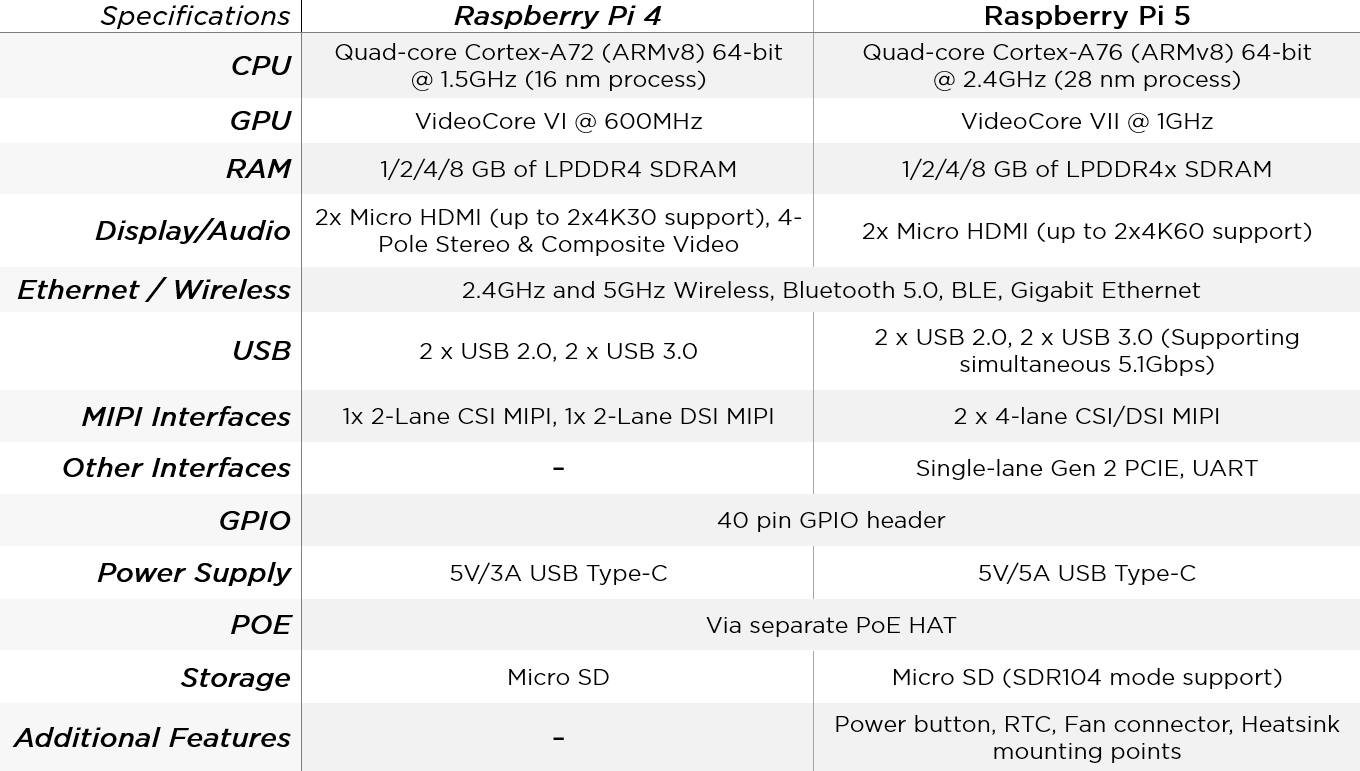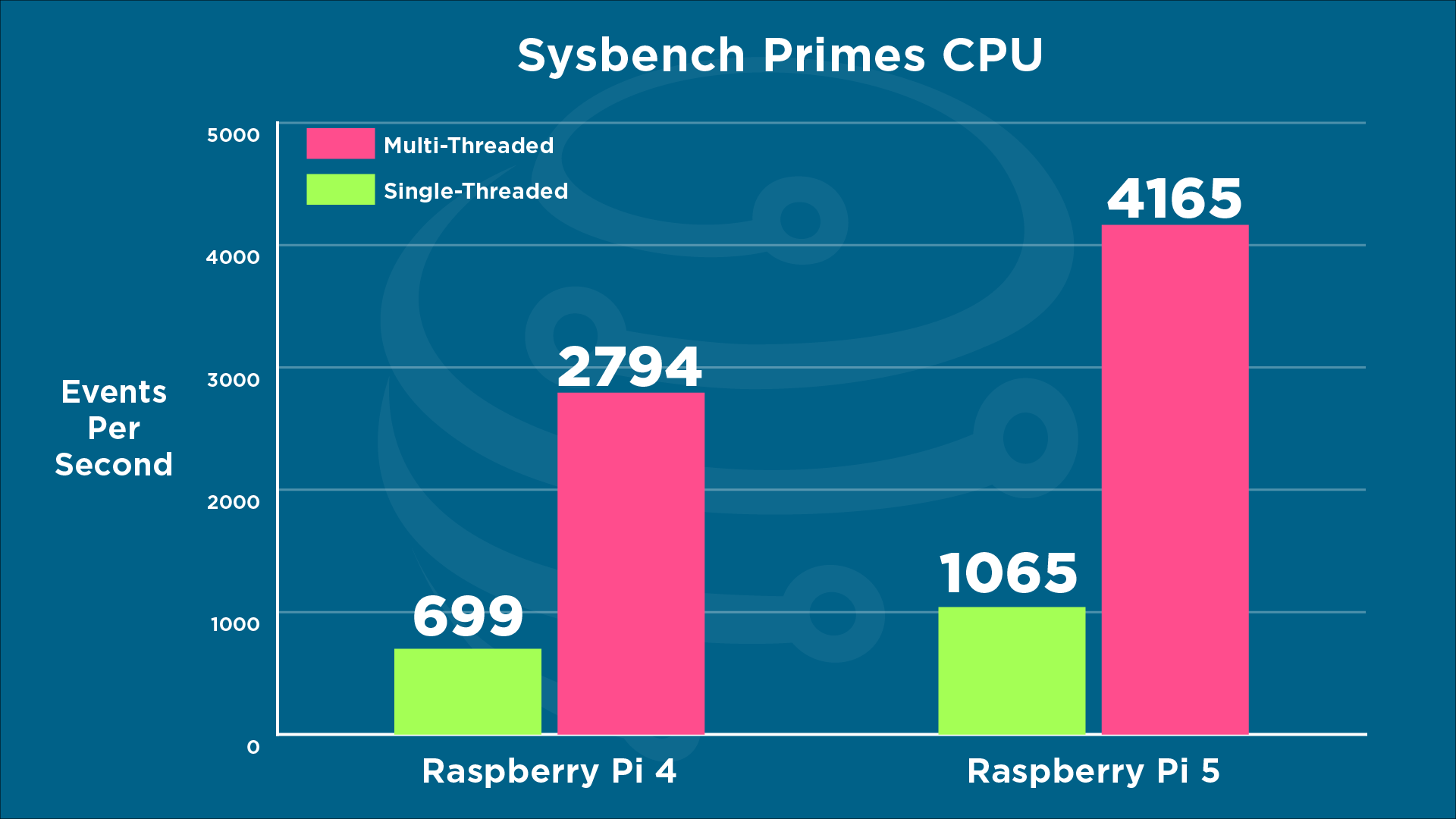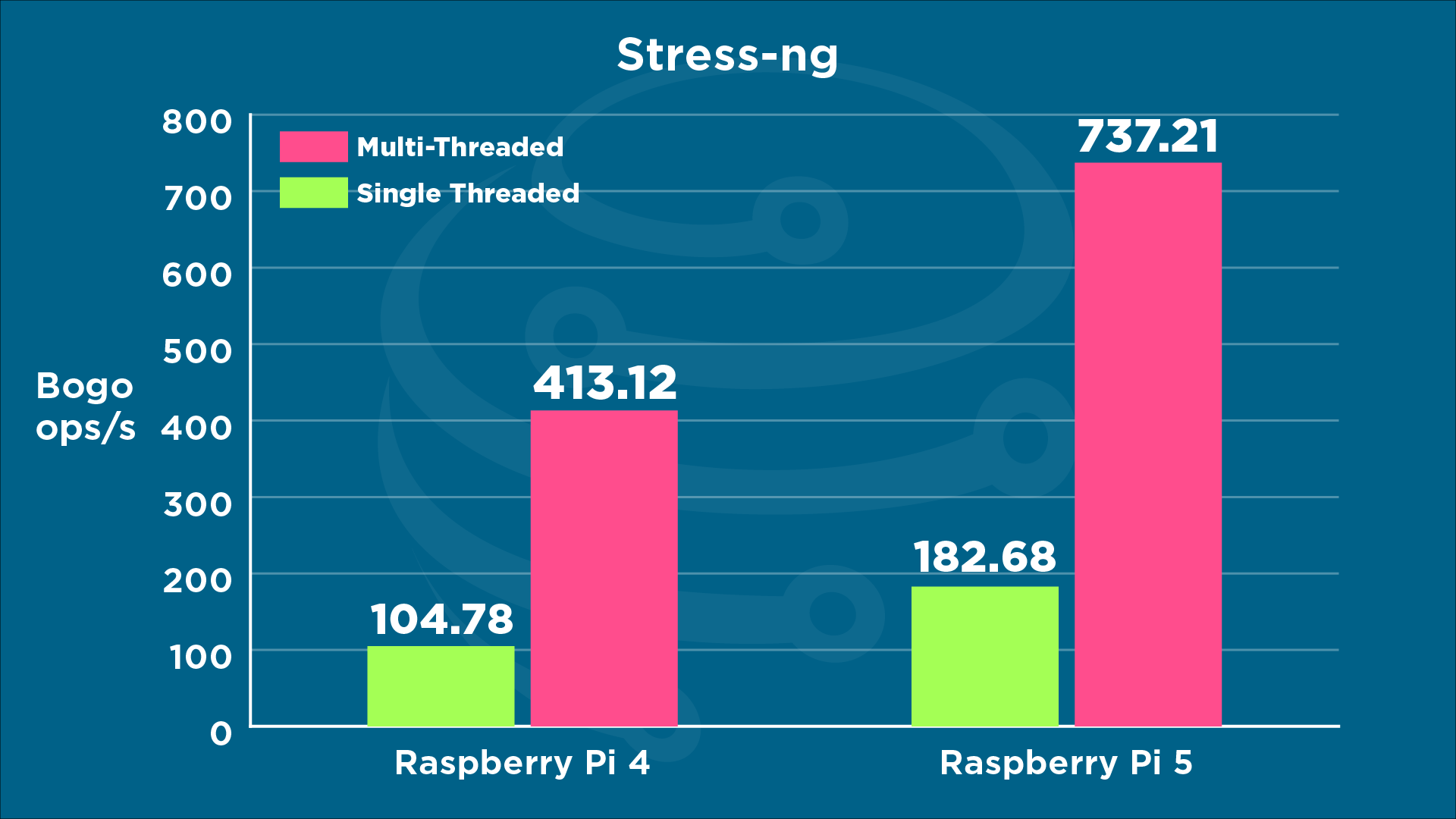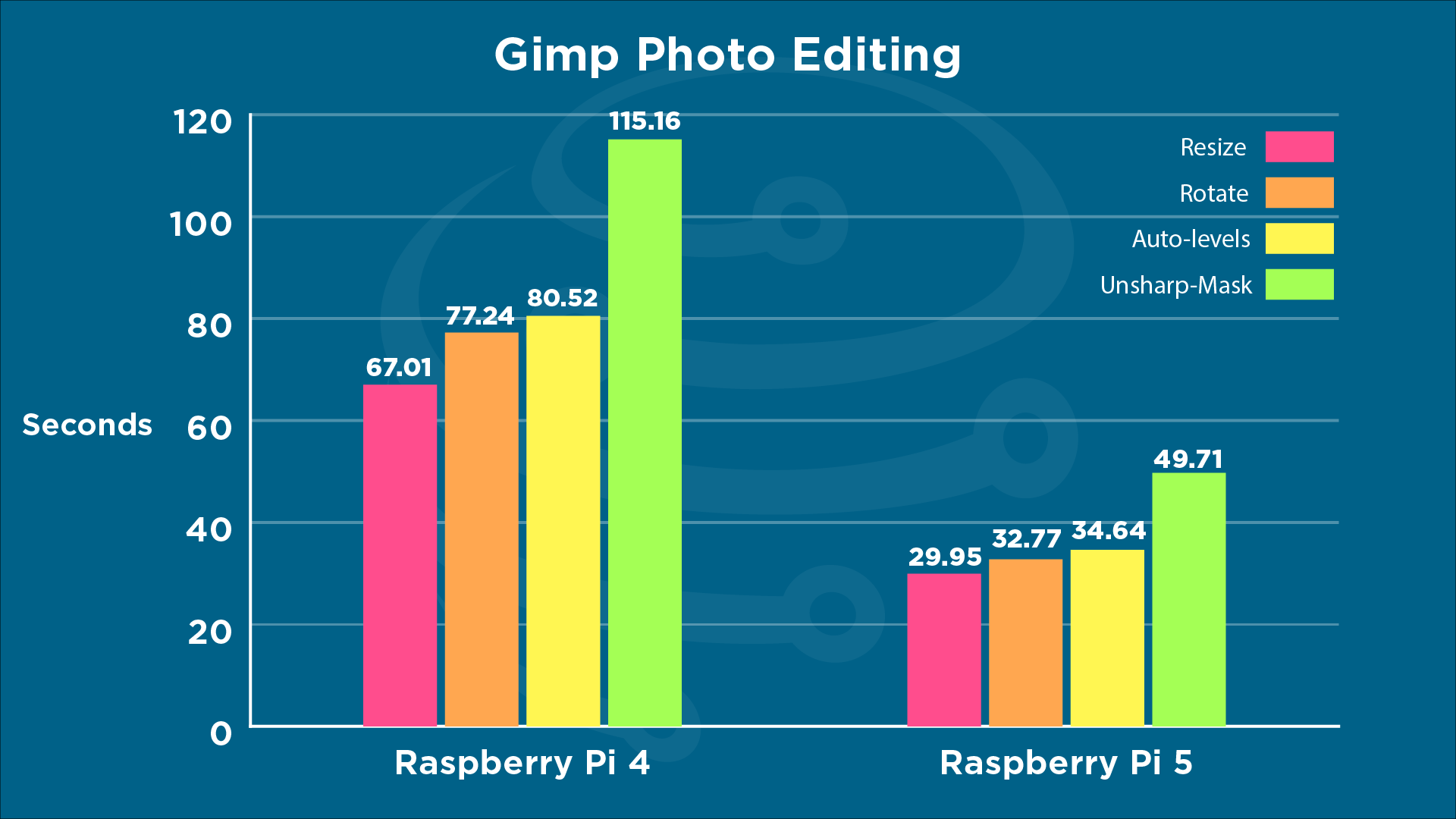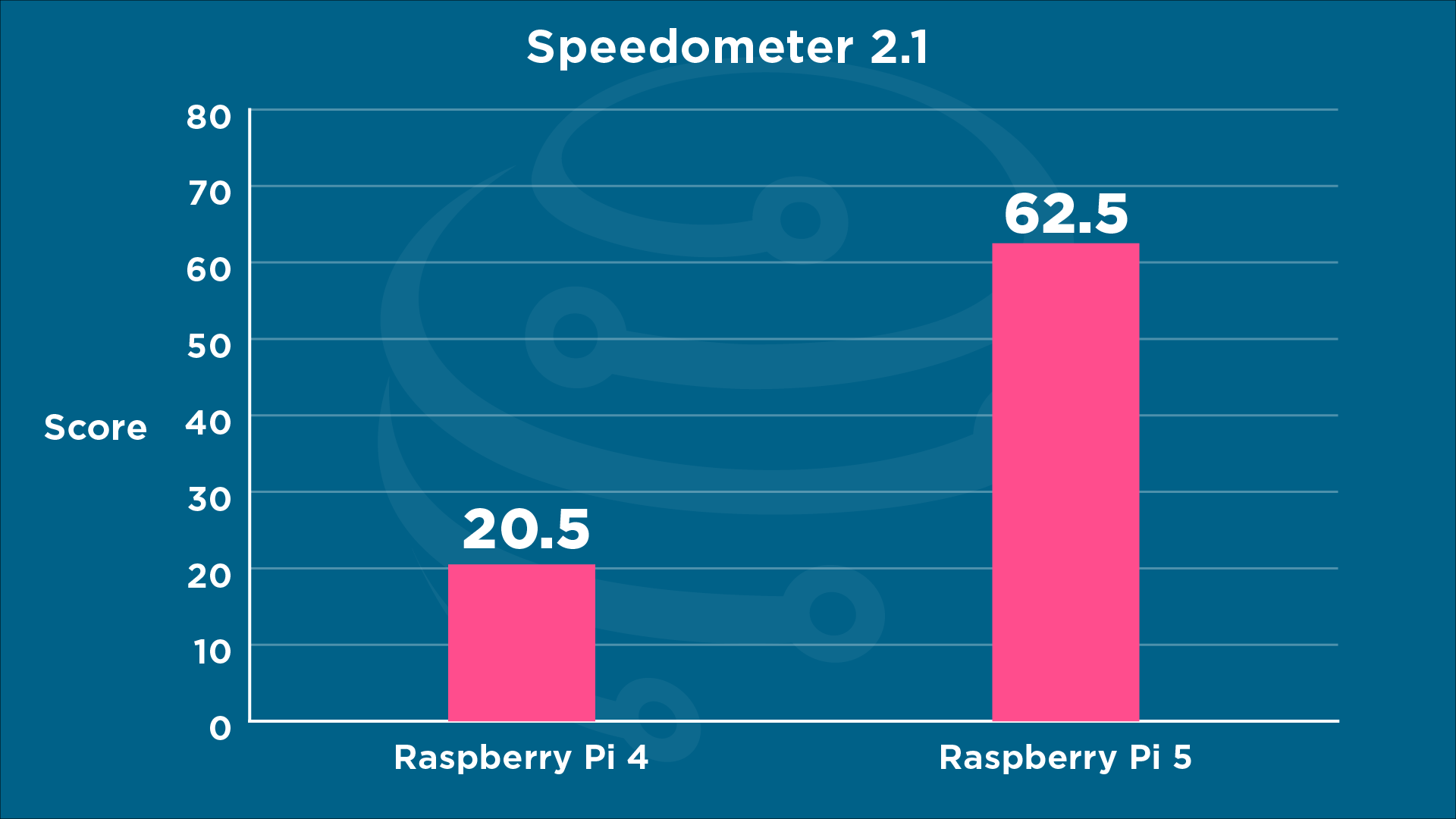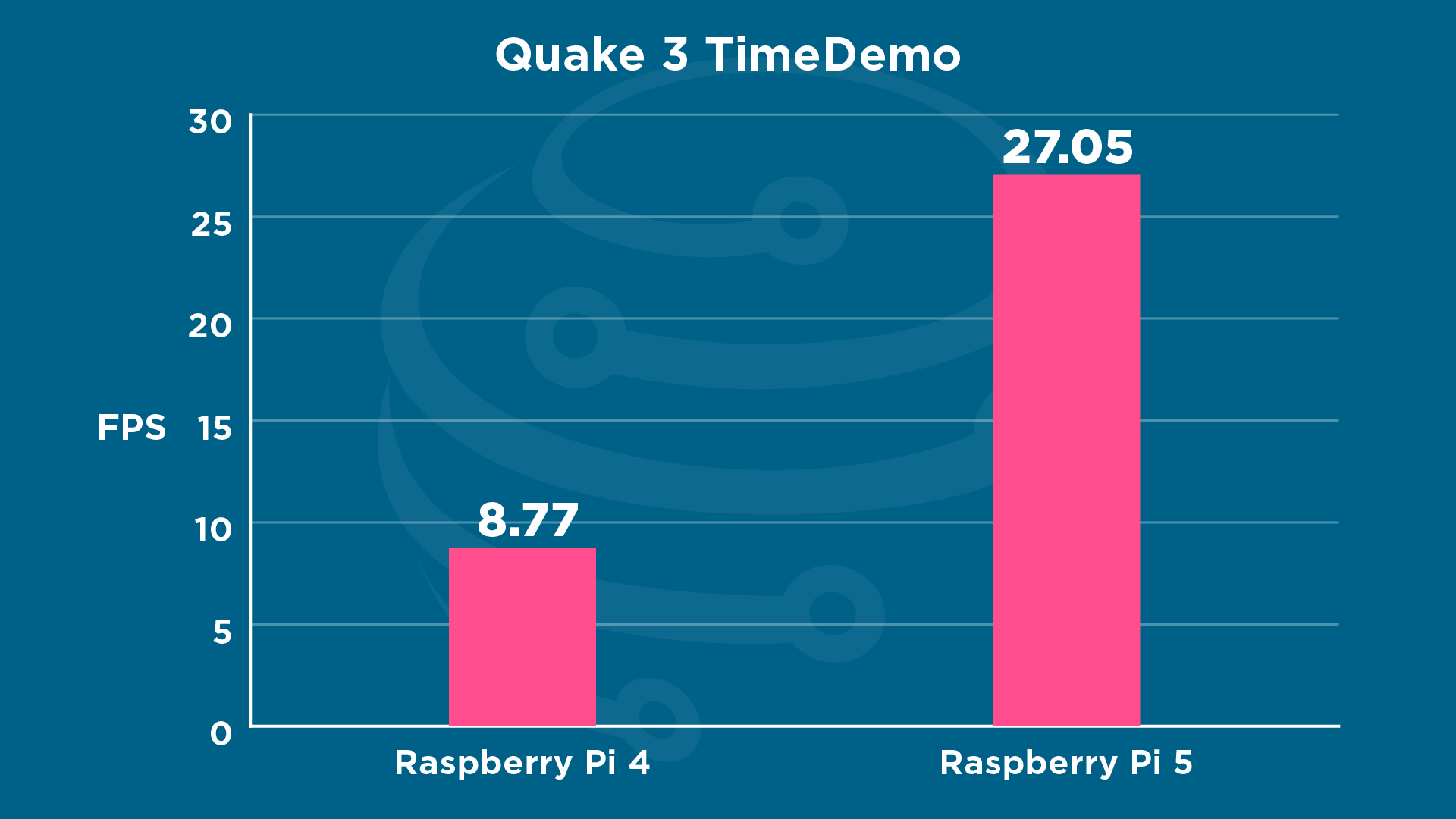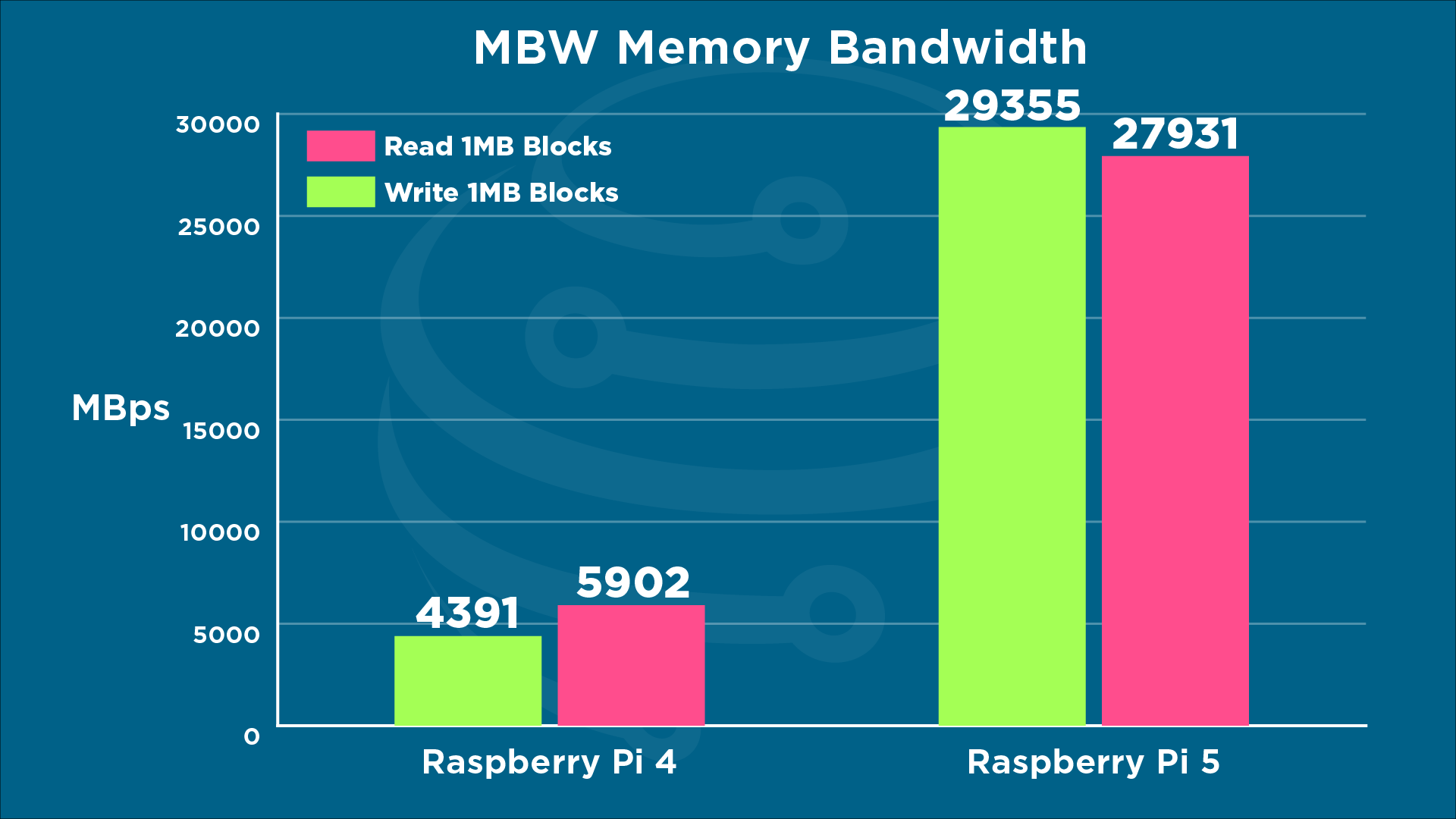The Raspberry Pi 5 is here and one of the biggest questions is, how does it stack up against the previous Pi 4? Well, we already have one to take a look at so let’s run some benchmarks and compare the two.
(We also have another article reviewing the Pi 5 and our experience with it if you want to check that out.)
On Paper
Based just on specifications, the Pi 5 seems to bring a considerable leap in processing power, most notably we have a quicker and more efficient CPU and GPU, as well as an improvement in RAM (still only coming in the same size models), SD card performance, and a wealth of new connectivity and interfaces.
All of these specs tout the Pi 5 to come out on top, but let's dive into some benchmarks to verify this. Just some ground rules, all benchmarks were performed running an early alpha build of Bookworm OS (the next major Pi OS release). The Pi 4 was cooled with a large heatsink and Pimoroni shim fan, with the Pi 5 being cooled by the official active cooler, both of which resulted in no thermal throttling in our airconditioned office. Both Pis were powered by their respective official power supplies.
CPU Benchmarks
The Pi 5 comes out on top of every CPU benchmark, but how much depended on whether we were doing a synthetic or more real-world benchmark.
We started with everyone's favourite, Sysbench, which is a prime number calculator. In both single-threaded and multi-threaded tests, the pi 5 came out about 50% quicker. (If these numbers look much higher than your pi 4 benchmarks that’s because Sysbench performs much better on a 64-bit OS).
We then booted up Stress-ng, it is a more informal benchmark and is less accurate of a test, but it was one of the few ones that had no issues on bookworm. Stress-ng stresses the CPU but counts how many operations are performed over the stress time. We ran 60-second tests and saw that the Pi 5 scored about 75% to 80% higher on single, and multi-threaded tests. (And yes, Bogo ops per second is the official unit of this test.)
For our more real-world benchmarks, we saw an even greater increase in performance. We used a timed bzip2 test which compresses a non-repetitive, random binary data file (we benchmarked 100 MB), and the pi 5 was able to complete this task in just under half the time of the pi 4.
In a similar result, we benchmarked GIMP, the photo editing suite (through Phoronix suite). It performs some common operations on a sample file and again, the Pi 5 was able to complete these in under half the time, about 2.3 times quicker on average.
While technically not solely a CPU benchmark, we also gave speedometer 2.1 a whirl. It tries to simulate real-world web application scenarios and measures how quickly your browser can perform certain tasks. In this benchmark, the pi 5 smashed the pi 4 with it being able to perform these tasks just more than 3 times quicker.
So all in all, the Cortex-A76 on the Pi 5 brings a huge leap in computing performance over the Pi 4, with less on synthetic benchmarks and more on real-world applications. The Pi 5 is obviously the clear winner here.
GPU Benchmarks
GPU performance was about the same story again with the new VideoCore 7 coming in at about double the performance of the previous Pi’s VideoCore 7. We ran a default glmark2 benchmark at 1080p, which renders various scenes to test texture handling shading, lighting, etc, all very practical graphical tests. We did encounter some issues with this, but found that running the benchmark through phoronix test fixed any issues.
Running a Timedemo on Openarena (the open-source Quake 3 clone), the Pi 5 again came out on top, with it running at triple the fps of the Pi 4. This was at default settings, 720p and there may be other software or OS-related things besides the GPU providing this 3x number, but both of these tests indicate that the Pi 5 is much quicker in the graphical department.
Memory Benchmarks
In our memory tests, we attained some astounding results. We ran the INTmark test on RAMspeed to measure the maximum possible cache and memory performance while reading and writing 1MB blocks of data. Whilst the Pi 4 was able to perform these at about 4 to 6 thousand megabytes per second on read and write operations, the Pi 5 came in at nearly 30 thousand megabytes a second. That is a 5 fold increase... And we have no idea why, these are early days for this board, whether it is something related to Bookworm OS or whether they are doing some stuff hardware-wise, we don’t know. It's not that the Pi 4 is running slow on Bookworm, we were getting about the same speeds on Bullseye (in fact it seemed slightly faster on Bookworm). The Pi 5 seemed to be the clear winner here, with it also being a similar result across different block sizes.
MicroSD Benchmarks
One of the biggest additions to the Pi 5 was the new RP1 chip to handle i/o capabilities, and the effectiveness of this new chip is very apparent with the Pi 5's microSD performance. It is capable of double the sequential read and write speeds of the Pi 4. We attained these results with HDparm for the read, and dd for the write (with 50 thousand 8k blocks). We also booted up Iozone and found that while random 4k write speeds were about the same, there was about a 50% increase in random 4k read speeds.
Power Usage
We performed some testing with our Ottiarc and found that whilst the Pi 4 draws about 275 mA on idle, the Pi 5 draws about 500 mA (this is with no monitor or peripherals plugged in). Running a loaded power consumption test, we plugged in a monitor, keyboard and mouse, booted up Stress-ng, and saw that the Pi 4 consumed about 1.3 A, and the Pi 5 about 2.15 amps - that is quite a bit more power-hungry and is one of the only categories that the Pi 4 comes out on top.
We also analysed boot times and saw that the Pi 5 took just under 20 seconds to boot, considerably quicker than the 35 seconds of the Pi 4.
Pi 5 vs Pi 4 | Some Closing Thoughts
So the Pi 5 is leaps and bounds quicker than the Pi 4. We think at least a doubling of performance across the board is a good ballpark figure. So what does this mean? Well over the last couple days we have been using it, it has been a great experience and while we think the Pi 4 can be a day to day computer for light activities, the Pi 5 can fill this role without being frustrating as the Pi 5 presentst a step-change in responsiveness. Opening applications and manipulating windows in the desktop environment was smooth and snappy on the Pi 5, and a little clunky on the 4, there was also a lot less waiting for things to load, and less browser crashes, all the little infuriating things.
We only had some minor frame drops here and there when watching 1080p 60 fps youtube content, whilst the Pi 4 struggled with it (and I would consider it largely unwatchable). In writing this video, circumstances meant that I had to get out my 5-year old uni laptop, and In the process of producing this review, I would actually try to do as many tasks as possible on the pi 5 because it was just quicker (although my laptop probably does need a repasting though, but you get the point). I'm excited to see how this power will be used, for example, I think Retropi is going to be a great experience when it gets full support for the Pi 5. The new features are also amazing, I think one of the first things I am going to do replace our media pc with a Pi 5 strapped + m.2 ssd combo through that new pcie, as its fast enough now to be a replacement for all my media pc needs.
In our brief experience with the Pi 5, I think that Is the biggest thing that jumps out, that it is a very viable daily driver for light loads, and general web browsing - something that I wouldn’t consider the Pi 4 to be. The pi 4 is a few bucks cheaper, consumes less power, and has a headphone jack. But the trade off of these features for a huge leap in processing power and a wealth of new features, that’s a value proposition that is really hard to beat...

